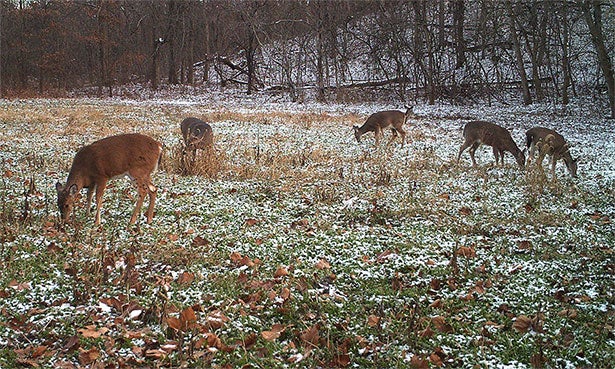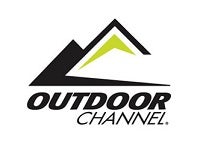Using Time-Lapse to Pattern Deer
OutdoorChannel.com 09.10.15

By: Posted 09-01-2015 OutdoorChannel.com in News by Jeremy Flinn
Permitted use provided by: OutdoorChannel.com.
Technology in the deer hunting world has drastically evolved in the last decade. One of the leaders in advancement has been trail cameras, which, based on the volume now used in the deer woods, shouldn’t be too surprising. Yet one of the best features on many of today’s trail cameras is rarely used to its full potential is the time-lapse mode.
Time-lapse allows a user to set the camera up to take a picture (or set of pictures) on a fixed interval without being triggered by an animal. Many of today’s advanced cameras allow the time period during the day to be set (like only during hunting hours), and also still operate and trigger independent of the time-lapse setting if set off by an animal.
Though it seems obvious, there should be a bit of strategy behind setting up these time-lapse cameras. What is your goal? Is it to just see deer or pattern deer? If it is the latter, then here are a few tips to get exactly that done.
Often cameras are put on time-lapse in areas where deer are likely to move outside the range of the camera’s sensor. In other words where it won’t trigger the cameras, such as large ag fields or food plots. Although it may seem crazy, you need to get some height on your camera.
In order to begin to pattern where deer are entering or exiting a field, place the camera between eight to 15 feet in the air. No, you won’t be able to get ground level up close pictures, but that isn’t the purpose here. The purpose is to cover as much ground as possible from the viewpoint, almost like if you sat in a tree stand. At this height you will begin to cover a great amount of the field and start to build patterns on deer travel. Once you have narrowed the spots deer enter and exit the field, get another camera down at normal level in that area to capture up close pictures.
Stop taking night photos. Time-lapse at night on a large area is about as useful as an arrow with no fletchings. You will not be able to see anything, and it only wastes photo space, battery life, and your time sorting through. If you can, select for only daylight (or shooting light) hours.
Don’t bait. This defeats the purpose of trying to capture normal deer travel movements. Unless this is how you will be hunting (which in some states is true), then you are creating bias results.
Lastly, orient the camera North or possibly South. Pointing towards the east and west will not only set off the camera with false triggers in many cases, it will also leave blinding sun images which you likely will not see anything.
This season, consider the elevated time-lapse camera in order to pattern deer entering and exiting large fields. Then narrow it down to place a camera up close. You will see more deer and waste less time trying to locate the ones you want to get a bead on.
